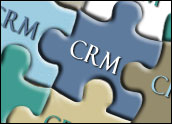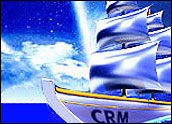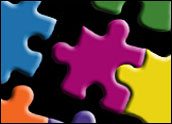
Despite repeated pleas of “Do you hear me now?” from customers the world over, few companies have done much more than turn a deaf ear. As a result, consumer frustration is at an all-time high while brand loyalty has hit an all-time low.
The technologies that were supposed to open lines of communication across many channels merely cut the line on all conduits.
“Customers have always provided input, via support incidents, bug reports, enhancement requests, etc., but somehow in a Web 1.0 CRM world, these were just lines of code in a database and easily ignored,” John Ragsdale, vice president of research at the Service & Support Professionals Association (SSPA), told CRM Buyer.
Wooing 2.0
Now that once-solid economies worldwide have staggered to a slump, for-profit companies have a new focus on the oldest of assets: loyal customers. The most savvy among them have modeled the new woo after the seductive plays of Web 2.0.
“It is part of a trend that Web 2.0 launched: creating a community/ecosystem of customers and actually listening to what they have to say,” explains Ragsdale.
“When you have an online collaboration with customers via a discussion forum, you can’t ignore them when there is huge agreement around a product issue,” he says. “Also, with sales and marketing being interested in online communities, customer input is receiving a much larger audience than before.”
While several savvy companies have picked up on the usefulness of Web 2.0 tactics, one in particular has taken a step beyond and doubled effectiveness by copying relationship models found in open source initiatives. That company is SAP.
“SAP is trying to borrow some concepts from the open source world, where communities organize around specific open source projects, in order to engage their customers and partners in a mutually beneficial arrangement,” Henry Morris, senior vice president for worldwide software and services research at IDC, told CRM Buyer.
The Ecosystem
Specifically, SAP has created what it calls a “Customer Focused Ecosystem” around many of its products. Mentors — power users, essentially — are assigned to work with users, guiding them through the best way to use the software. Meanwhile, the communities themselves end up creating plug-ins, templates or other add-ons to the software that they share among themselves. Sometimes, ideas for features within the applications will bubble up from the community and be implemented by the software maker.
“We build out functionality from the business functions that our customers actually want,” Sven Denecken, vice president, head of suite solution management at SAP’s enterprise resource planning division, told CRM Buyer. “We are the glue between the real world and IT.”
The company’s earlier model was to set up a large number of separate relationships with system vendors, system integrators and ISVs (independent software vendors) to ensure that the infrastructure was present upon which SAP applications depended, e.g. servers, storage, network, database and such, plus add the functionality necessary for the functions that SAP must execute, e.g. a tax calculation application that SAP’s ERP system could access in order to calculate tax rates before issuing an invoice, said Morris, who has covered SAP’s ecosystem for 13 years.
“So think of this as a series of 1-to-1 relationships between SAP and their partners where SAP set up the terms and conditions upon which the relationship ran, completing the solution that SAP brought to market,” he explained.
Beyond Customers
The current ecosystem model, says Morris, is different in many ways from this older version. First, it engages not only partners, but customers and even companies who are not customers, e.g. European banks who participate in SAP’s Industry Value Network or IVN are not all SAP customers. Second, SAP recognizes the power of a network and encourages relationships among its stakeholders, rather than SAP having an individual relationship with each ecosystem member.
The network approach in which ecosystem members have relationships with one another, e.g. for sharing expertise as an extension to SAP’s own support structure, has the ability to scale well beyond the capabilities of the former model. It also addresses a major issue commonly bemoaned by SAP customers — the continuing search for SAP-knowledgeable talent.
“One SAP customer we interviewed this spring was thinking of moving their SAP application from their Long Island, N.Y., headquarters to a small facility they had in Philadelphia, because SAP talent/expertise was more widely available in Philadelphia,” he said. SAP relies on the extended support network formed by its communities, especially the BPX (business process expert) and SAP Developer Network, to help to meet this need for expertise.
“It means that SAP doesn’t exert the same type of direct control as in the earlier model, but it has the capability of serving the much larger population of SAP users and developers and partners that exists today,” concludes Morris.
Other industry followers agree. “SAP’s BPX communities are unique, active and gaining momentum,” Ray Wang, principal analyst at Forrester, told CRM Buyer. “The key differences with all of SAP’s communities lie with the level of investment, active engagement by users, and focus on business level roles.”
The result is a powerful and heady “compose on top” mix to SAP’s recipe of success. One example: SAP’s ERP incremental releases. Customer adoption of the latest release is increasing rapidly, with more than 4,000 go-lives since January 2007 including companies such as GISA in Germany; HT Media in India; Toray Engineering in Japan; and Valero Energy in the United States.
At the center of SAP’s strategy is the profound recognition that the customer’s needs will always override the vendor’s wants in the buying process. The very heart of SAP’s ecosystem is the motto “innovation without disruption to core operations,” which spans the company’s operations from incremental releases to new product development.
Think of it as a dramatic mindset change from “build it and they will come” to “the customer is king.”
“This is a really smart move for SAP, who since the launch of NetWeaver I have faulted for being wholly IT focused, with nothing in the message for business users,” says Ragsdale. “With their Customer Focused Ecosystem, they have an opportunity to loop more business leaders into the mix and focus on applications and business value, as well as infrastructure.”
So what does SAP’s ecosystem success mean to the rest of the world of commerce? At least in terms of BPX communities, it is heralding a more customer-friendly evolution.
“With the renewed focus on business process and the ability to extend business process automation via new technologies, such as service-oriented architecture and business process management, this will be a critical area going forward. Organizations need to develop this type of role for business process expert with business and IT expertise — into kind of a hybrid,” says Morris.





















































